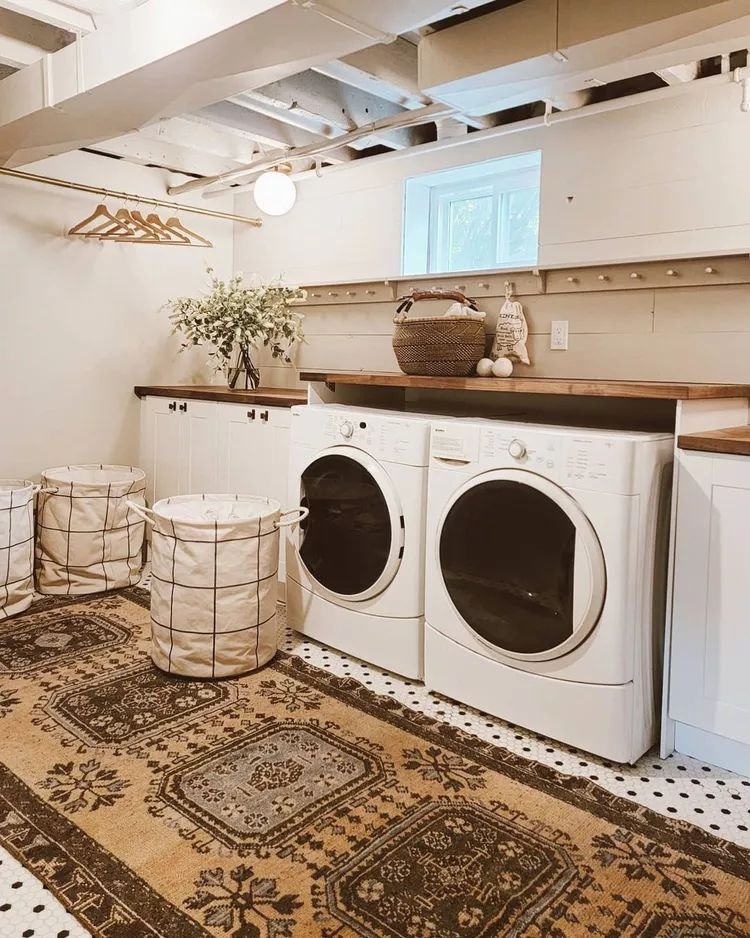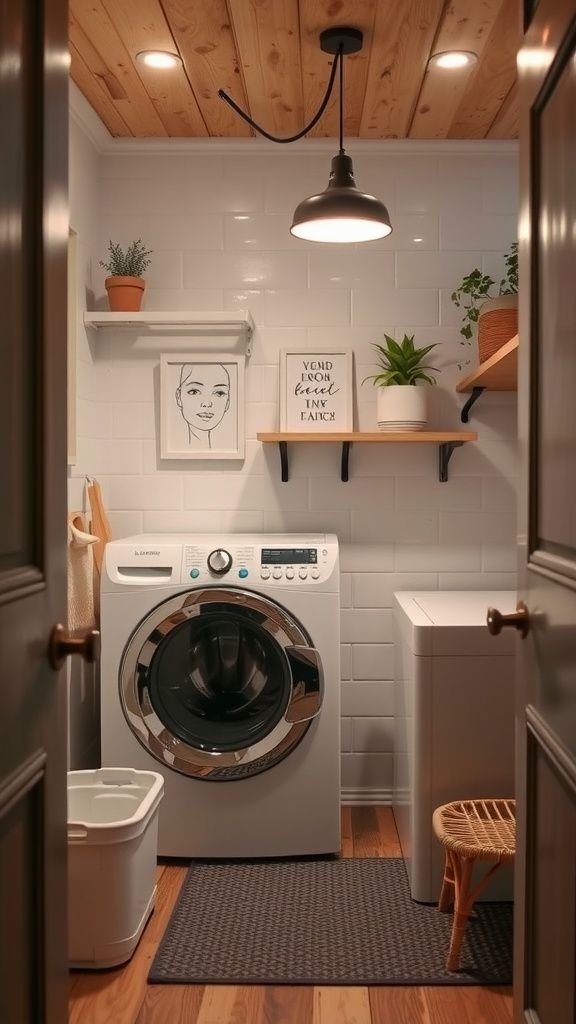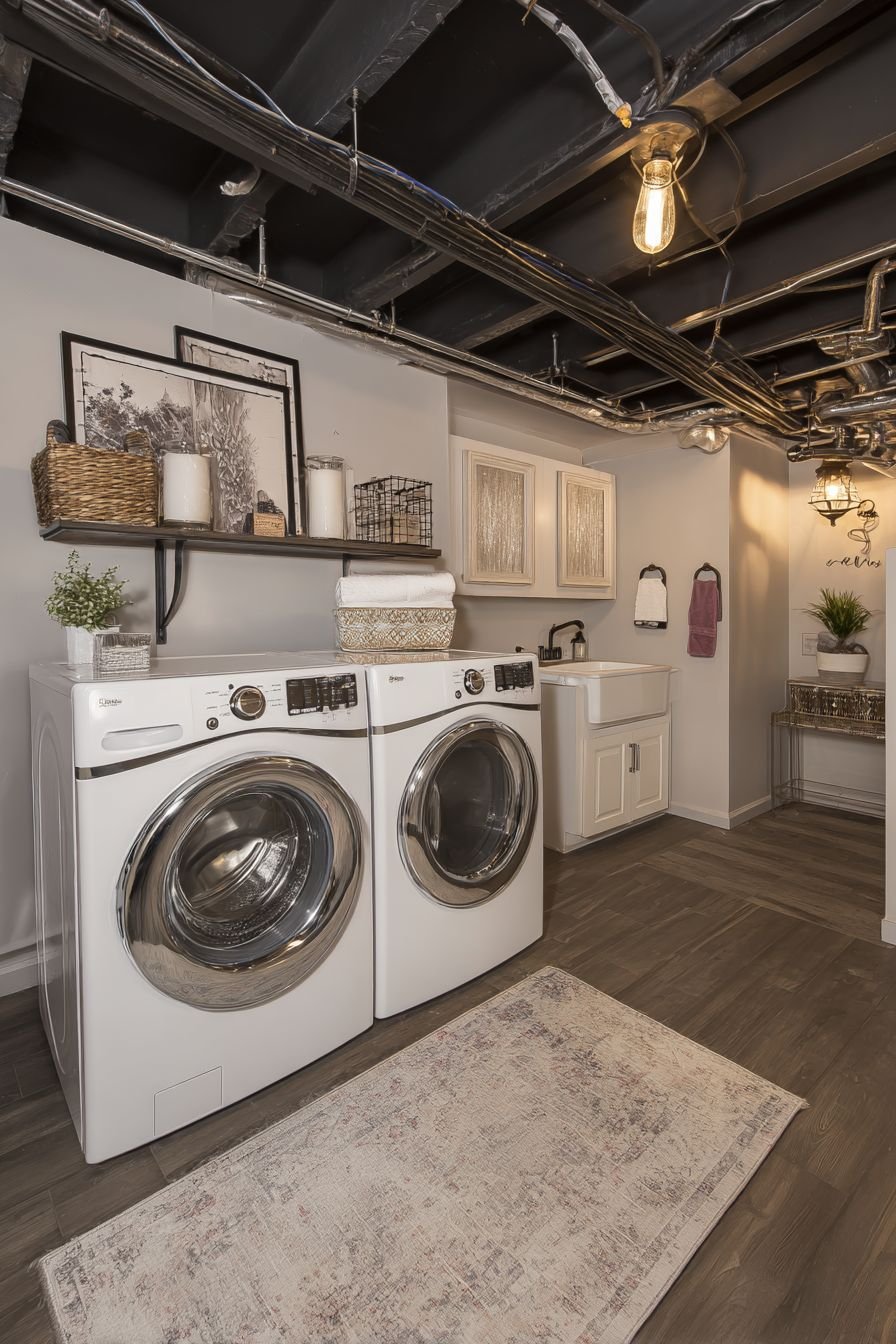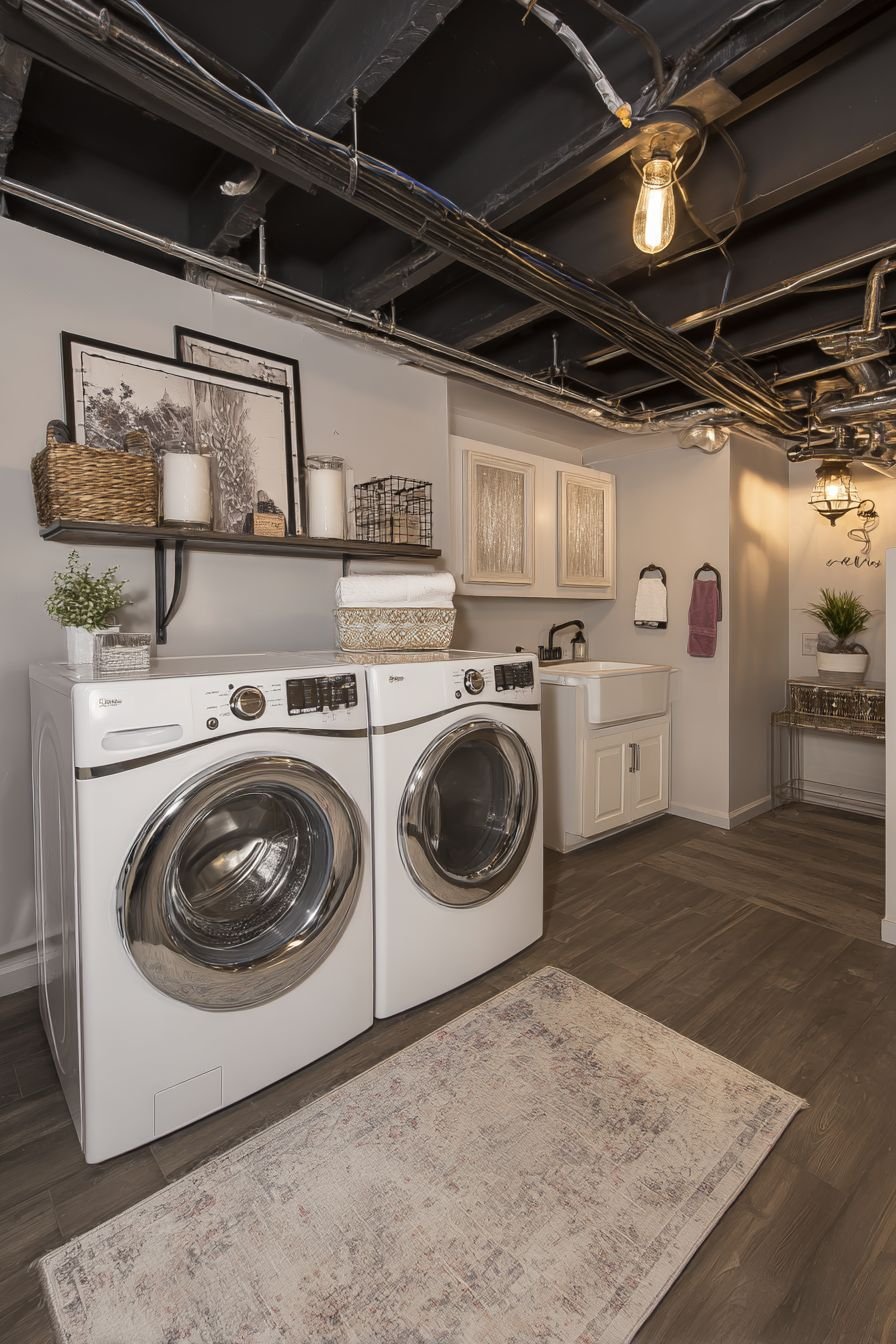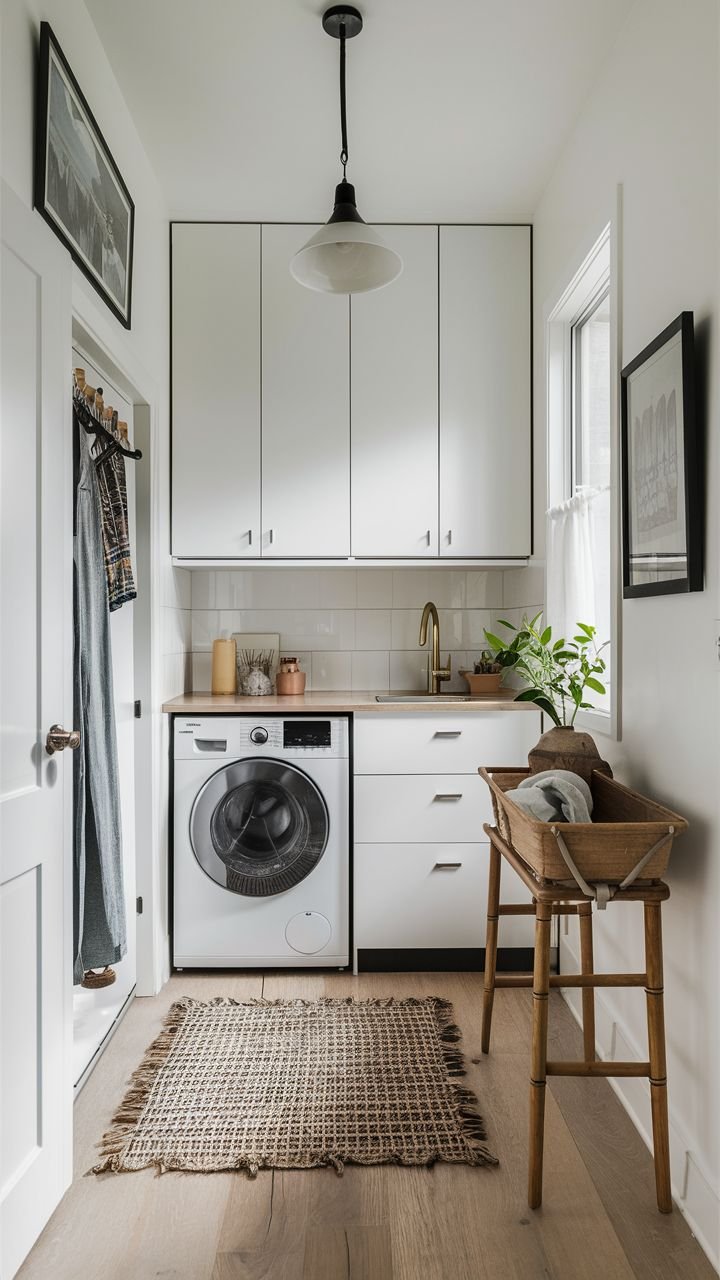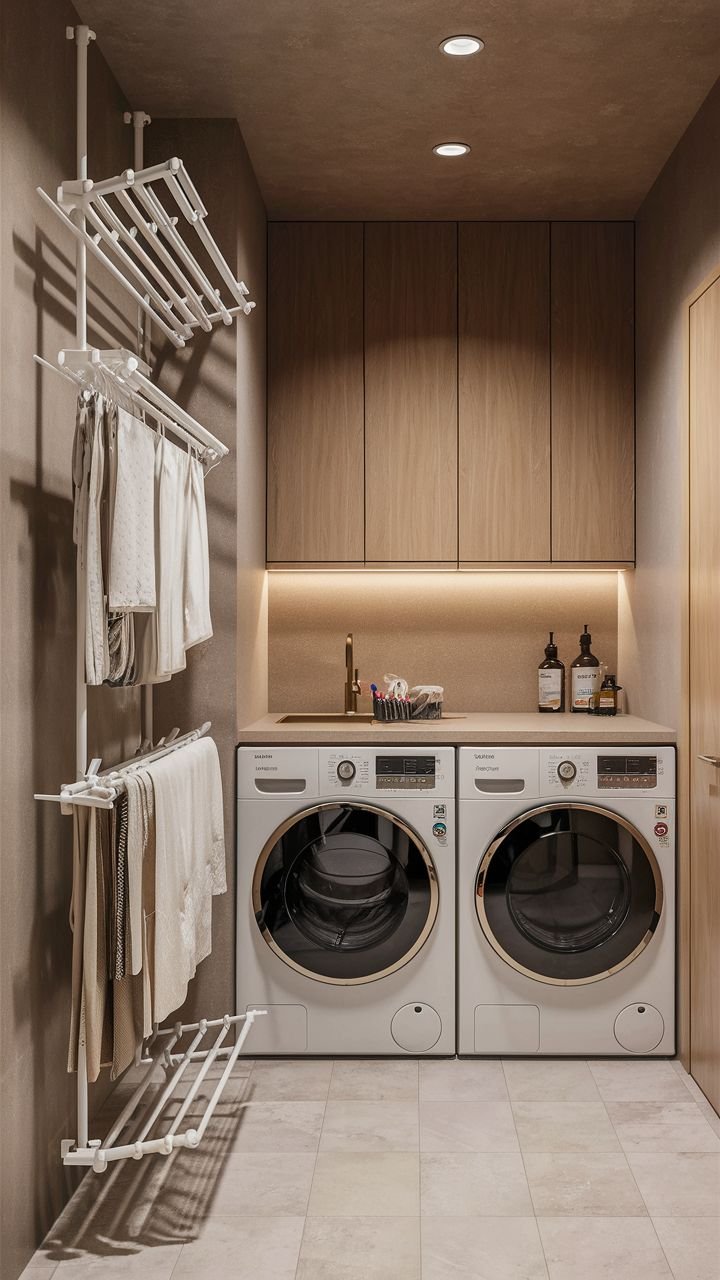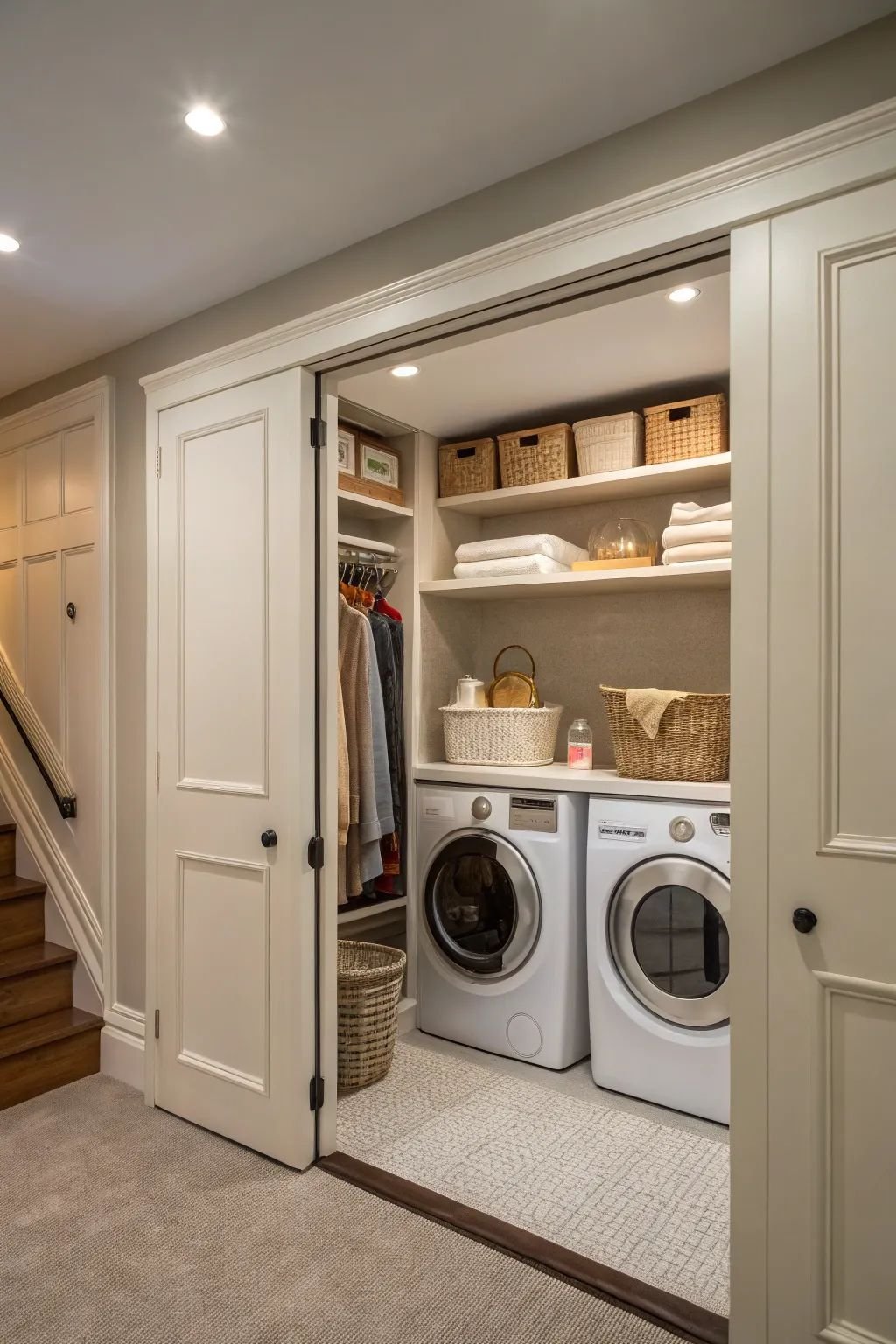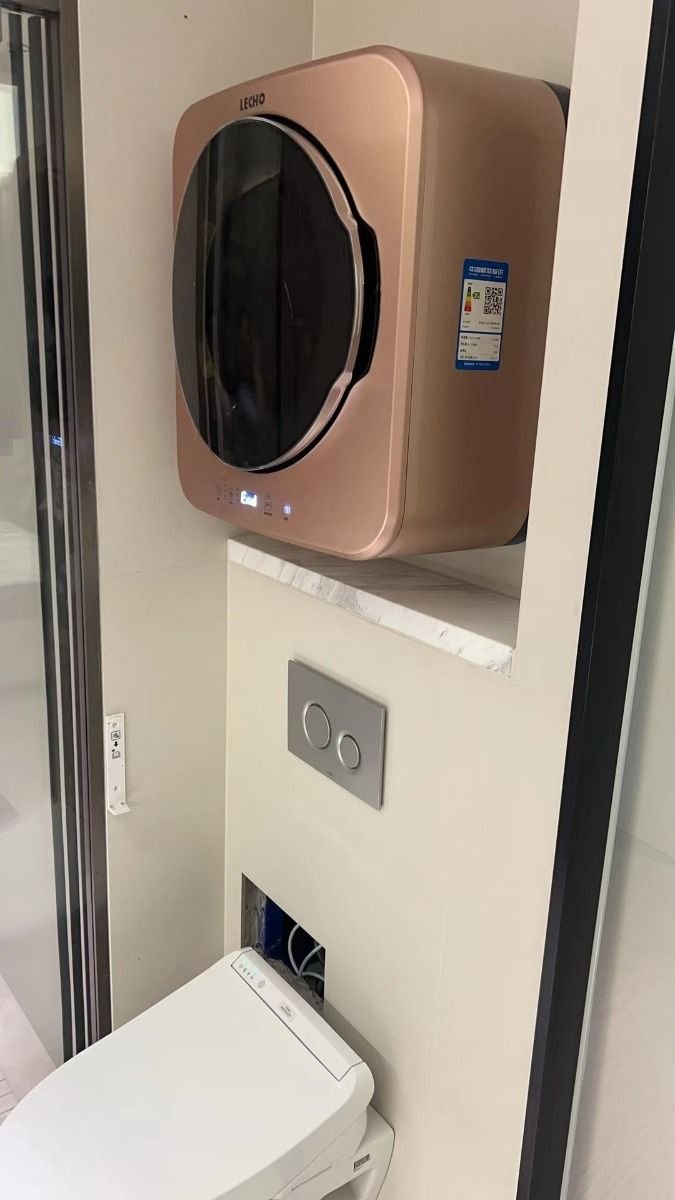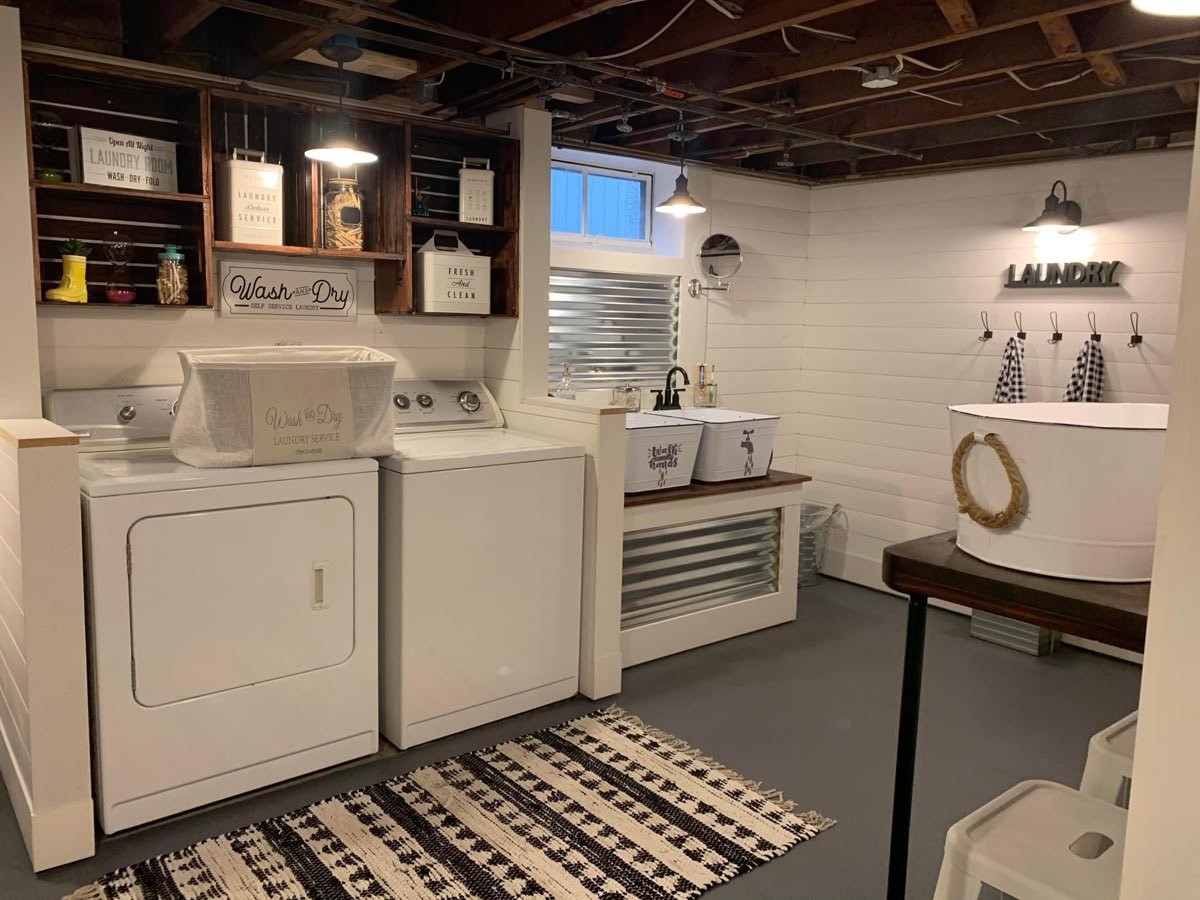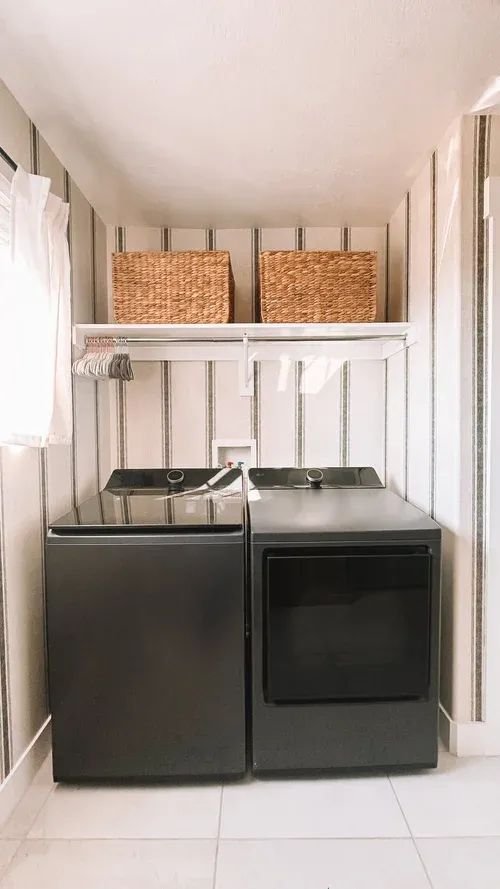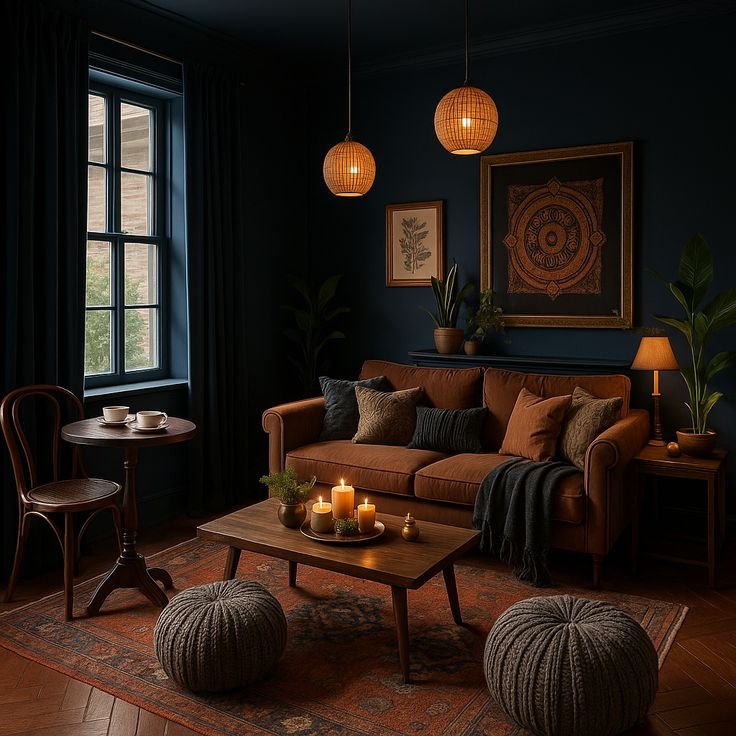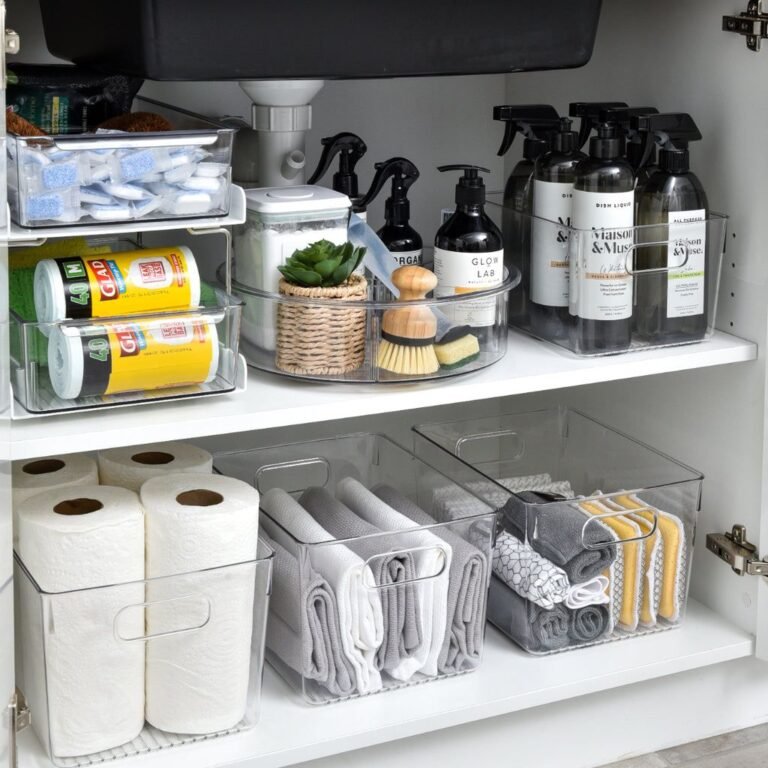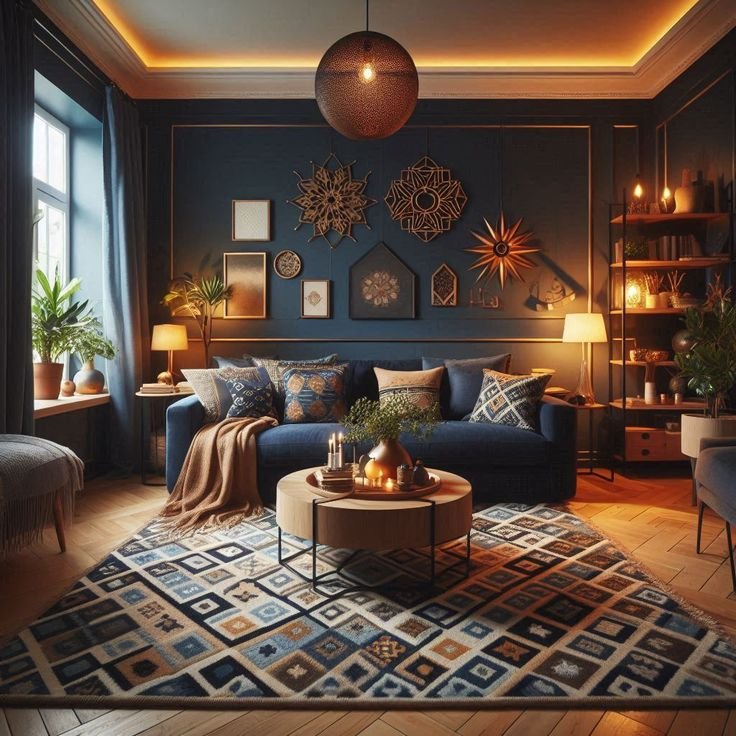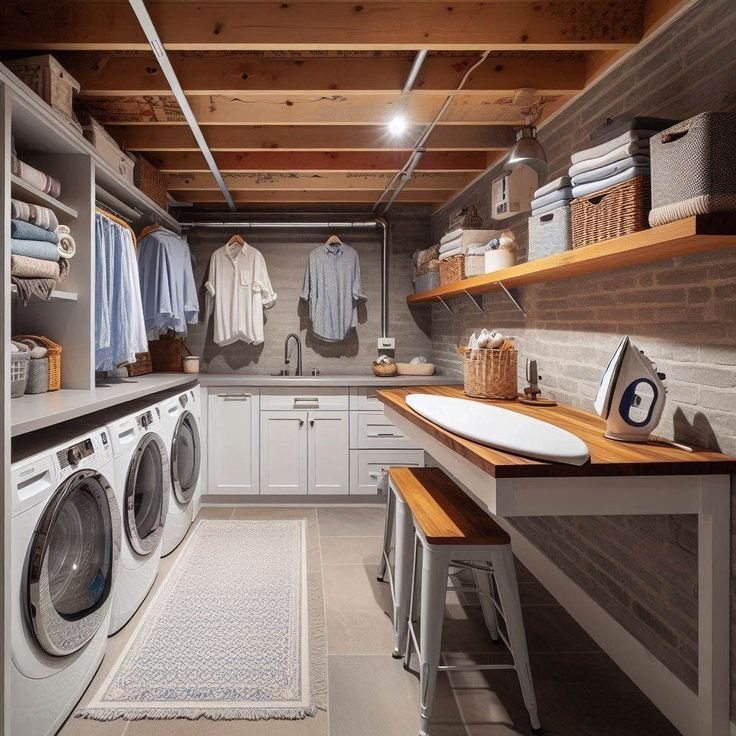
Making a small basement laundry room both practical and appealing can feel like a big project, but it’s totally doable.
The way to do it is by getting clever with your space and picking solutions that help you get laundry done without feeling cramped.
Basement laundry spots often come with their own set of challenges, like low ceilings or a lack of natural light, but with the right ideas, you can turn that humble area into an efficient and even enjoyable part of your home.
I’ve put together some smart and stylish ideas that are perfect for smaller spaces.
Whether you’re dealing with a super tiny nook or just a cozy corner, these suggestions will help you make the most of every square foot, making your laundry routine a lot smoother.
Clever Storage Solutions for Tight Spaces
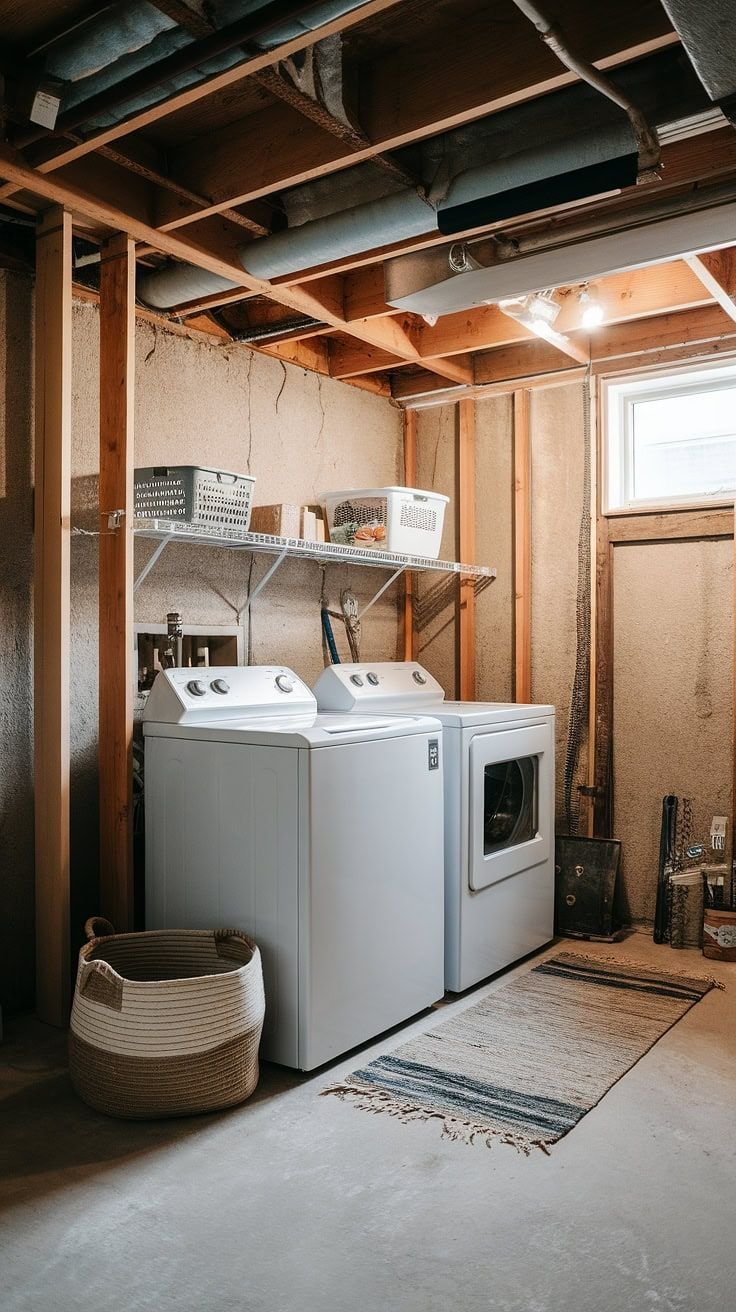
When you’re dealing with a small laundry room, getting your storage right is super important.
Every bit of space counts, so thinking vertically is a big help. Floating shelves are a fantastic option because they don’t take up any floor space and give you a spot to keep detergents, fabric softeners, and other supplies handy.
You can install them above your washer and dryer or on an empty wall. For a tidy look, try using matching bins or baskets on these shelves to keep things organized and looking neat.
Another smart move is to use wall-mounted cabinets. These are great for hiding away less attractive items and keeping your cleaning supplies out of sight.
You can pick cabinets that match your style, whether you like a sleek, modern look or something more classic.
Don’t forget about the backs of doors either! Over-the-door organizers can hold smaller items like dryer sheets, stain removers, or even a small ironing board. These little additions can make a huge difference in how much you can store and how clutter-free your laundry room feels.
Brighten Up Your Basement Laundry
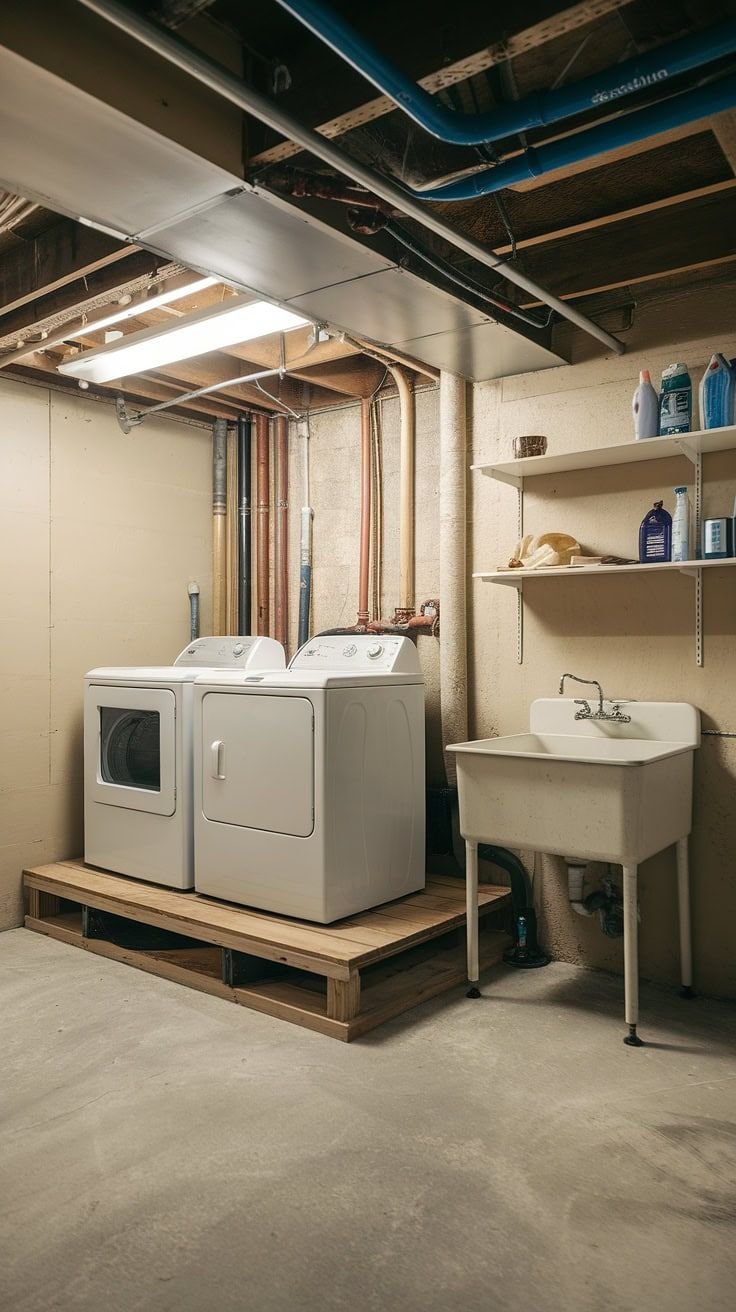
Basement laundry rooms can sometimes feel a bit dim, so getting the lighting right is a big step toward making the space more inviting.
Good lighting doesn’t just help you see what you’re doing; it can also make the room feel larger and more open.
Smart Overhead Lighting
Start with overhead lighting. Recessed lights are a great choice for basements because they’re flush with the ceiling, saving valuable vertical space.
A bright, central light source will illuminate the whole room evenly.
Adding Task Lighting
Beyond the main light, think about adding task lighting. Under-cabinet strip lights can brighten up countertops if you have them, making it easier to sort clothes or treat stains.
If you have an ironing station, a small wall-mounted light or a floor lamp can make a big difference.
Mirrors are another clever way to bounce light around and make a small room feel bigger. A well-placed mirror can reflect existing light and add a stylish touch.
Together, these lighting ideas can transform a dark basement corner into a bright, functional laundry area.
Choosing Colors and Design for Small Rooms
The colors you choose for a small basement laundry room can really impact how it feels. Lighter colors like whites, soft grays, or pale blues are excellent for making a space appear more open and airy.
These shades reflect light, which is especially helpful in basements that might not have a lot of natural light.
Light and Bright Color Palettes
You don’t have to stick to just one color, though. You can add personality with pops of brighter colors through towels, laundry baskets, or even a fun piece of wall art.
When it comes to design, think about creating a cohesive look. Matching your cabinets and shelves in a light color can give the room a clean, unified feel.
Flooring and Personal Touches
If you have a counter for folding, a light-colored surface can also make the area brighter and more inviting. For flooring, consider lighter-colored tiles or even a durable laminate that can stand up to moisture.
These choices not only look good but are also practical for a laundry room. Adding a few small plants or some colorful accessories can also bring life and warmth to the space, making your laundry routine a little more pleasant.
Practical Layouts for Tight Spaces
When you’re working with a small basement laundry room, getting the layout right is important for making the space work well.
Stacked Appliances
One of the best strategies is to stack your washer and dryer. This setup instantly frees up floor space, which you can then use for a small counter, a laundry hamper, or even a narrow storage cabinet.
Many modern washers and dryers are designed to be stackable, so it’s a pretty common and straightforward solution.
Countertops and All-in-One Units
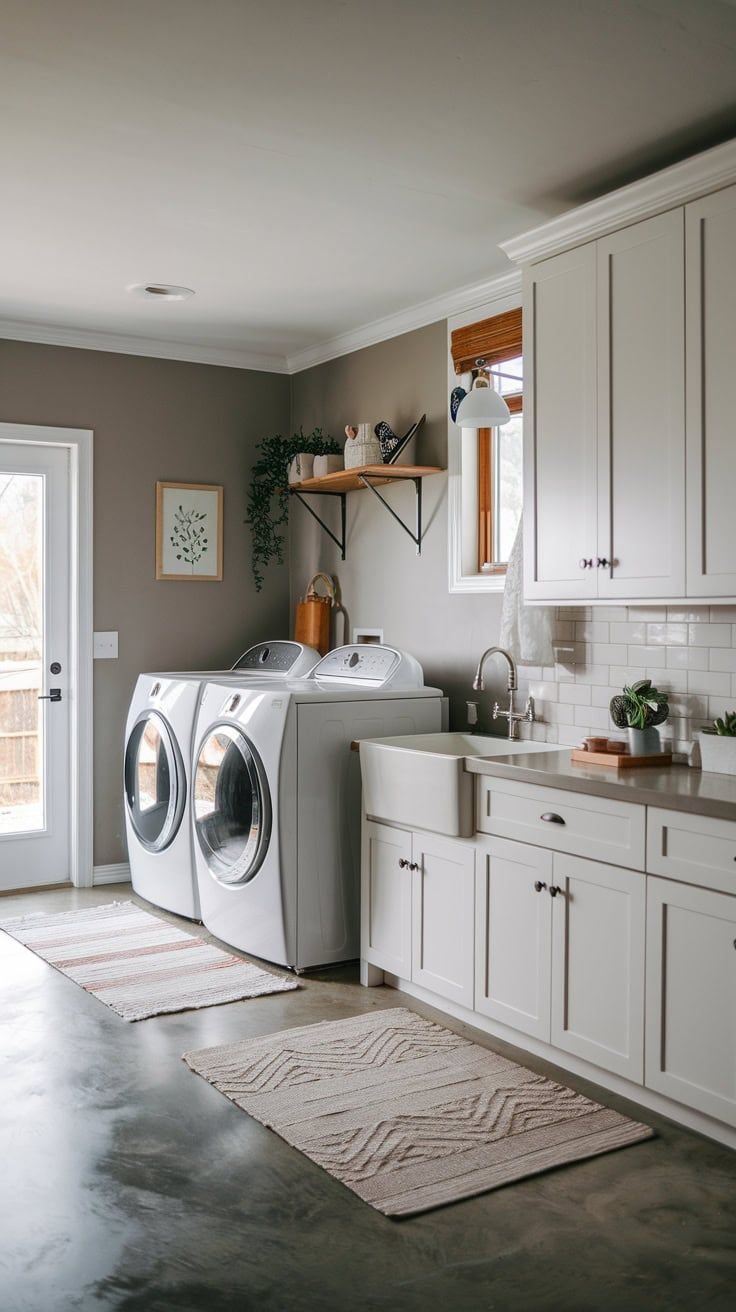
Another idea is to create a folding station above your front-loading machines. If your machines aren’t stackable, or if you prefer them side-by-side, you can install a sturdy countertop right over them.
This gives you a dedicated spot for folding clothes, saving you from hauling everything to another room. If you have an unusually narrow space, consider a single-unit washer-dryer combination.
These all-in-one machines are excellent for super tight areas, offering full laundry functionality in a much smaller footprint.
Thinking through these layout options can help you maximize efficiency and comfort in even the smallest basement laundry rooms.
Adding a Drying Area Without Clutter
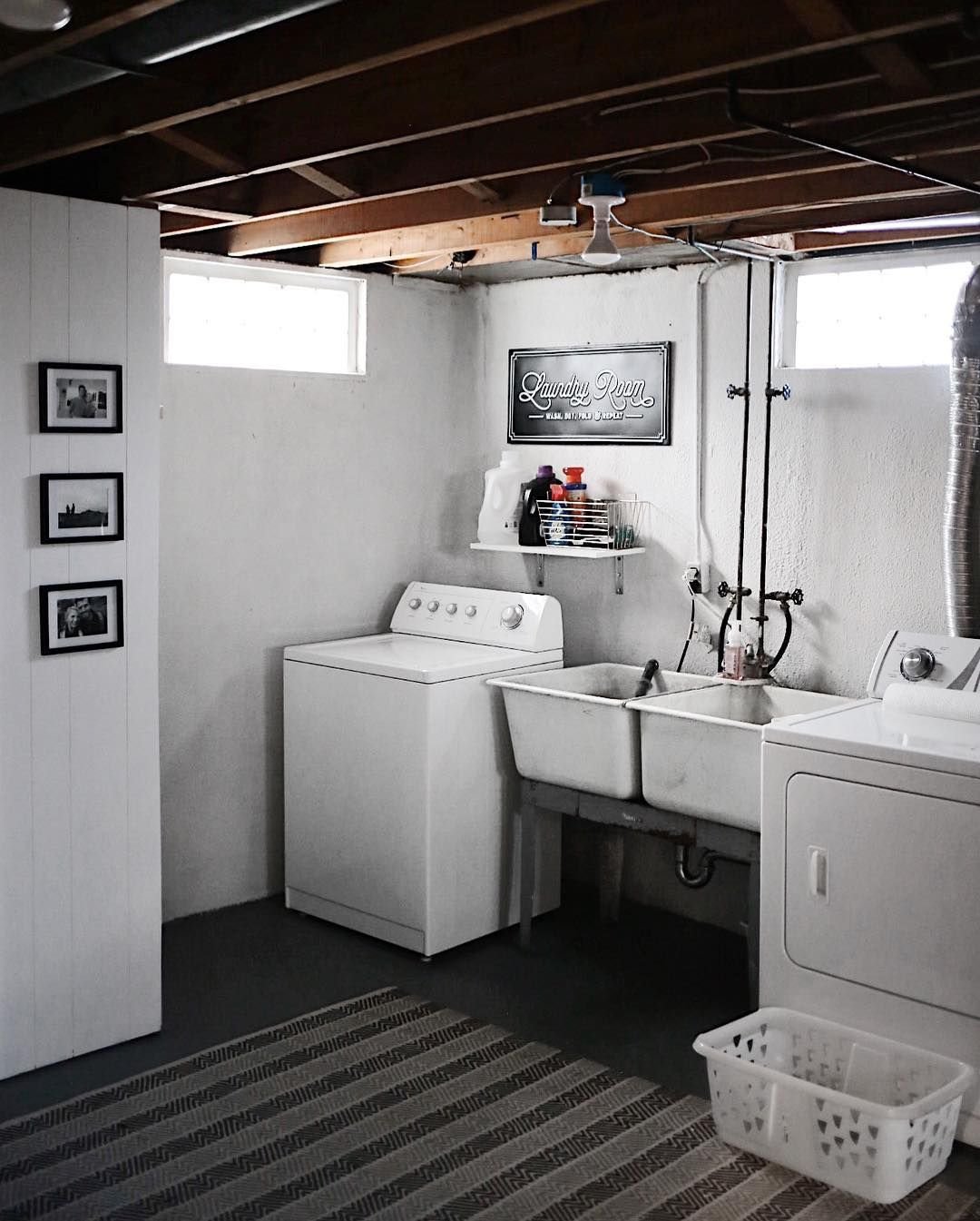
Even in a small basement laundry room, having a dedicated spot to hang clothes to dry can be a huge help.
Retractable Clotheslines
One of the simplest and most effective solutions is a retractable clothesline. These can be installed on opposite walls and pulled out only when you need them, then tucked away when you’re done.
They’re super practical for delicates or items that can’t go in the dryer, and they don’t take up any permanent space.
Wall-Mounted Drying Racks
Another great option is a wall-mounted drying rack. These come in various styles, from accordion-fold racks that extend outwards to simple bars that attach to the wall.
They offer a stable place to hang several items at once and fold flat against the wall when not in use.
If you have a bit of vertical space, a small tension rod placed between two cabinets or walls can also work wonders for hanging a few shirts or smaller items. These simple additions make air-drying convenient without cluttering your valuable floor space.
Laundry Sinks and Utility Options
Having a laundry sink in a small basement laundry room can be incredibly useful, even if you think you don’t have the space.
A compact utility sink can be a lifesaver for pre-treating stains, hand-washing delicate items, or even cleaning up after messy tasks.
Compact Sink Choices
Look for smaller, narrower models that fit snugly into a corner or against a wall without taking up too much room.
Some sinks are designed specifically for small spaces, and you can even find models that include a small integrated countertop for extra workspace.
Faucets and Integration
If a full sink isn’t an option, a small, deep basin that can sit on a counter or be stored away might work.
Also, think about the faucet. A pull-down or flexible faucet can make tasks easier, especially if your sink is on the smaller side. You can also integrate the sink area with shelving above it to keep soaps and scrub brushes handy.
Even a small sink area can significantly boost the functionality of your laundry room, making those tougher cleaning jobs a lot simpler.
Decor and Personal Touches for Laundry Rooms
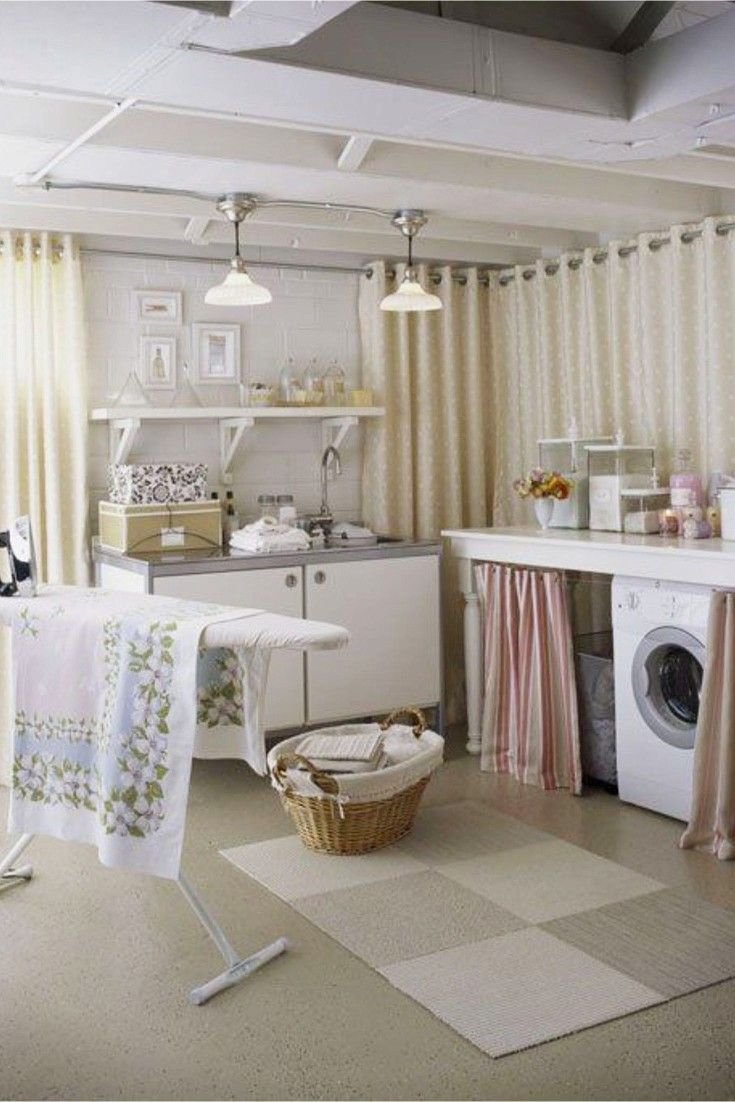
Even in a practical space like a laundry room, adding a few decorative touches can make a big difference in how it feels.
It helps to make the room more inviting and less like just a chore zone.
Functional Decor
Start with some functional decor, like stylish laundry hampers or bins. Instead of basic plastic, choose woven baskets or sleek metal ones that add to the room’s look.
Clear glass jars for detergent pods or clothespins can also look really nice on a shelf.
Wall Art and Greenery
Don’t be afraid to put up some wall art. A few framed prints, a small gallery wall, or even a fun sign with a laundry-themed saying can bring personality to the space. If you have any empty wall space, consider a small mirror.
Not only does it add a decorative element, but it can also make the room feel a bit larger.
Finally, adding a small, easy-care plant can bring some life and freshness into the room. These little details help to turn a functional area into a pleasant part of your home.
Noise Reduction for a Quieter Space
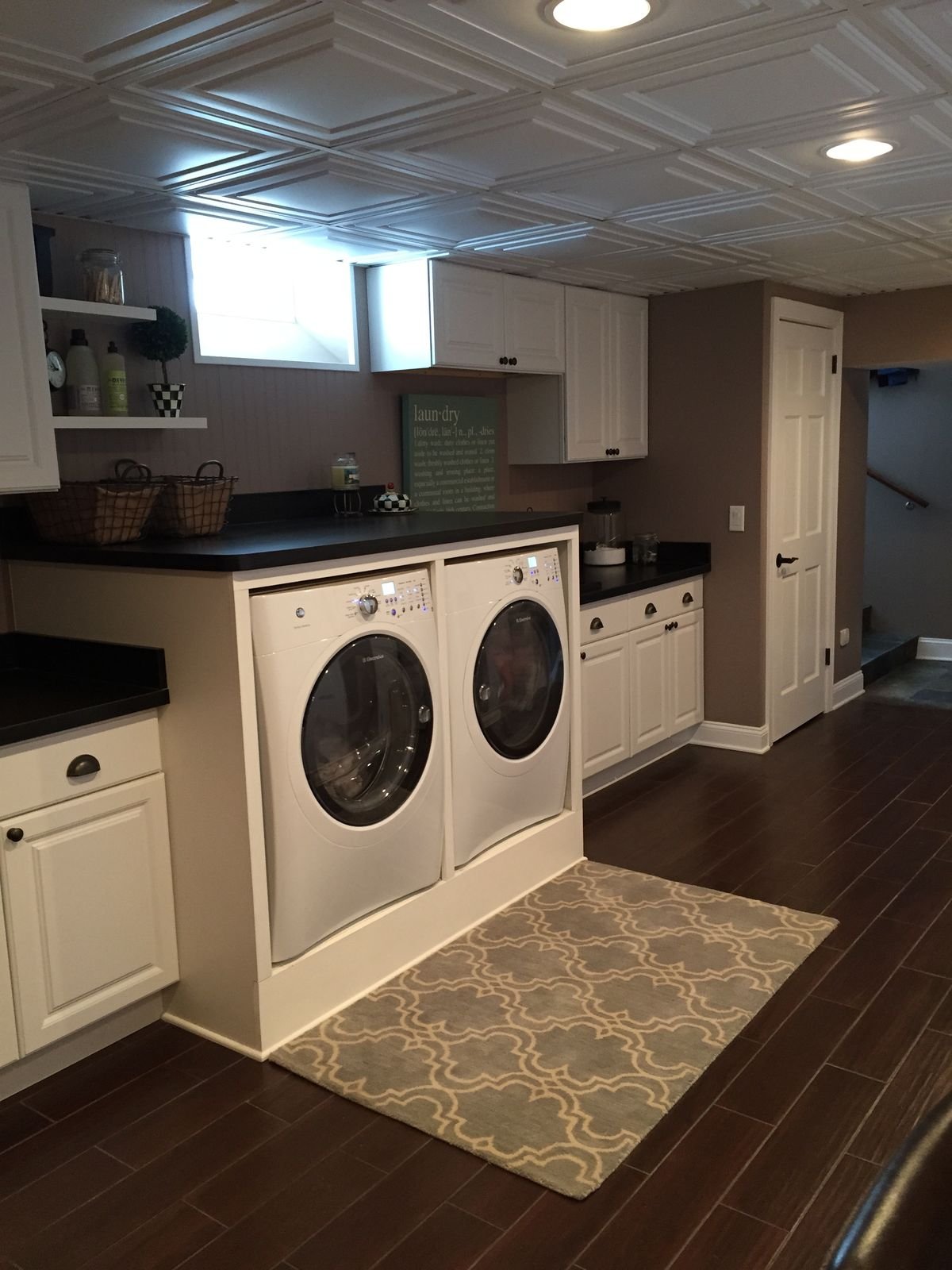
Basement laundry rooms can sometimes be noisy, especially with washers and dryers running.
Taking steps to reduce that sound can make the space—and the surrounding areas—much more pleasant.
Machine Vibration Control
One effective strategy is to use anti-vibration pads under your washer and dryer.
These simple pads can significantly cut down on the shaking and noise from your machines, especially during spin cycles. They’re relatively inexpensive and easy to install.
Sound Dampening Materials
Another idea is to consider the materials on your walls and floors. If you’re doing a renovation, adding extra insulation in the walls around the laundry area can help absorb sound.
For floors, a thick rubber mat or even a plush area rug (if appropriate for the space and moisture levels) can dampen noise and vibrations. If your laundry room has a door, make sure it seals well.
Adding a door sweep can stop sound from traveling into other parts of your basement or home. Even small changes like these can create a much quieter laundry environment.
Improving Ventilation and Air Quality
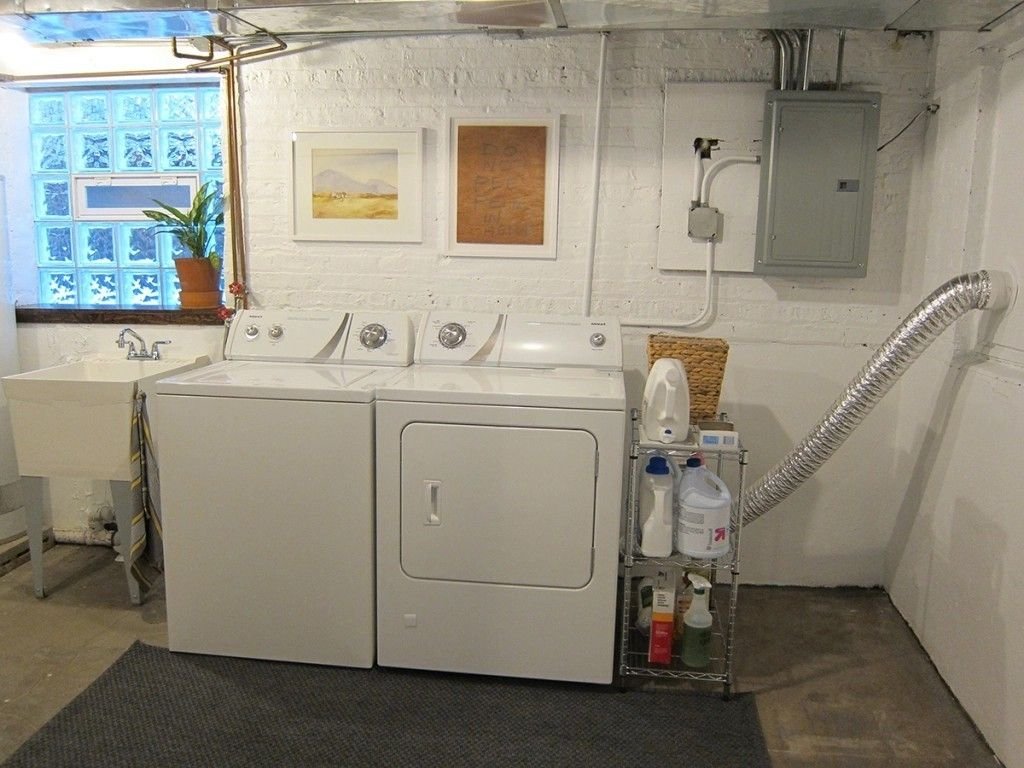
Good ventilation is super important in a basement laundry room, especially since basements can sometimes be damp and prone to stuffiness.
Proper airflow helps prevent mold and mildew, gets rid of lingering detergent smells, and makes the space feel fresher.
Dryer Vent Maintenance
The most crucial thing is to ensure your dryer vent is properly installed and clean, directing moist air outside. A clogged vent isn’t just inefficient; it can also be a fire hazard.
Exhaust Fans and Dehumidifiers
Beyond the dryer, consider adding a small exhaust fan if your laundry room doesn’t have one.
These can be installed in the ceiling or wall and are great for pulling damp air out of the room, particularly after you’ve been washing or if you’re air-drying clothes.
If a fan isn’t an option, even a small dehumidifier can make a big difference in controlling moisture levels, which is important for a basement space.
Regularly cleaning your lint trap and keeping the area tidy also contributes to better air quality. These steps help keep your laundry room smelling fresh and feeling healthy.
Boost Accessibility and Ergonomics
Making your small basement laundry room easy to use and comfortable is about more than just fitting everything in; it’s also about how you interact with the space.
Appliance Pedestals
Think about raising your washer and dryer onto pedestals if they’re front-loading. This can save your back from bending over constantly to load and unload clothes.
Many manufacturers offer pedestals that also include a drawer, giving you a little extra storage space underneath.
Smart Heights and Reach
Consider the height of your folding counter or shelves. Placing them at a comfortable standing height means less strain during tasks.
If you have a small ironing board, a wall-mounted fold-down option can be a real space-saver and keeps it at a good working height.
For items you use often, make sure they are within easy reach. Placing frequently used detergents or stain removers on lower shelves or in easy-to-grab bins can prevent unnecessary reaching or searching.
These small adjustments can make your laundry routine much more comfortable and efficient.
Creative Use of Nooks and Corners
Every little bit of space counts in a small basement laundry room, so don’t overlook those odd nooks and corners.
These often-forgotten areas can be surprisingly useful with a bit of creativity.
Slim Carts and Corner Shelves
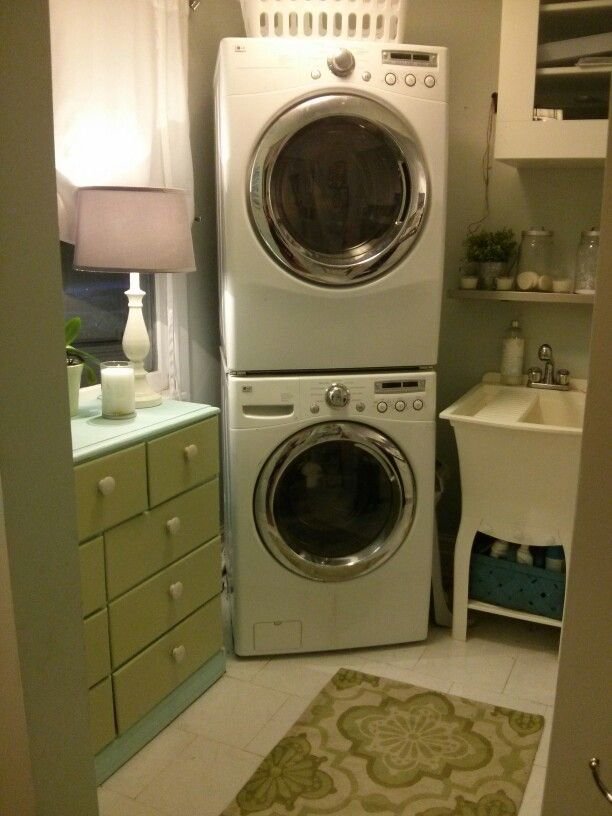
For instance, a narrow space between your washer and a wall might be perfect for a slim rolling cart.
These carts are great for holding laundry supplies, extra towels, or even a small wastebasket, and they can be pulled out when needed and tucked away neatly. If you have a corner that’s not being used, consider adding a small corner shelf unit.
These can provide extra storage for smaller items or even a spot for a decorative plant.
Magnetic Strips and Pegboards
Another idea is to use magnetic strips on the side of your washer or dryer for holding small metal items like scissors, lint rollers, or even measuring cups for detergent.
You can also install a small pegboard on an unused wall segment to hang brushes, dustpans, or other cleaning tools.
Thinking outside the box for these small spots can add significant functionality to your laundry room without cluttering the main pathways.
Budget-Friendly Laundry Room Upgrades
You don’t need to spend a lot to make a small basement laundry room feel updated and more organized. There are plenty of budget-friendly ways to improve the space.
Paint and Hardware Updates
One simple change is a fresh coat of paint. Choosing a light, bright color can instantly make the room feel cleaner and larger, and a gallon of paint is usually pretty affordable.
If your existing cabinets are looking tired, you can often give them a new life with paint or by simply swapping out old hardware for new, stylish knobs or pulls.
Smart Storage and Decor
For storage, look for inexpensive wall-mounted shelves or stackable bins from home improvement stores.
You can also repurpose old crates or baskets for holding supplies. Instead of buying new laundry hampers, consider fabric bags that can be folded away when not in use.
Even small decorative touches like a new rug, a fun piece of art you print yourself, or a couple of faux plants can add charm without a hefty price tag.
Focusing on these smaller, impactful upgrades can transform your laundry room without breaking the bank.
How to Plan Your Small Basement Laundry Room Makeover
Thinking about how to start your laundry room makeover?
It might seem like a lot to take on, but breaking it down into a few simple steps can make the whole process much smoother and more enjoyable. Here’s a quick guide to get you going:
Step 1: Measure and Assess Your Space
Before you buy anything, grab a tape measure and really get to know your laundry area.
- Take Measurements: Write down the dimensions of your room, including wall lengths, ceiling height, and the size of your washer and dryer. Don’t forget to measure any doorways or hallways that large appliances might need to fit through.
- Note Fixed Elements: Mark where windows, electrical outlets, water hookups, and drains are located. These fixed points will influence where you can place things.
- Consider Challenges: Think about any specific issues, like a low ceiling, a lack of natural light, or dampness. Knowing these upfront helps you choose solutions that work.
Step 2: Set Your Goals and Budget
What do you want to achieve with this makeover?
- List Your Needs: Do you need more storage, a better drying area, a folding counter, or just a nicer look? Prioritize what’s most important to you.
- Determine Your Style: Even a laundry room can have style! Do you prefer a bright, clean look, or something a bit more modern and sleek? Look at pictures for inspiration.
- Decide on a Budget: Figure out how much you’re comfortable spending. This will help guide your choices, whether you’re doing a full overhaul or just some quick updates.
Step 3: Sketch Out Your Ideas
It helps to see your plans on paper.
- Draw a Basic Layout: Use your measurements to draw a simple floor plan. You don’t need to be an artist; just get the basic shapes down.
- Arrange Items: Experiment with different placements for your washer, dryer, sink, shelves, and any other furniture. Try stacking machines, adding a folding counter, or moving storage around.
- Visualize the Flow: Imagine yourself using the space. Does it feel efficient? Can you move around easily? This step helps you catch any issues before you start buying or building.
Step 4: Choose Your Materials and Products
Now comes the fun part!
- Select Finishes: Pick out paint colors, flooring, and cabinet styles that fit your budget and desired look. Lighter colors can make a small space feel bigger.
- Shop for Storage: Find the shelves, cabinets, bins, and baskets that fit your space and your stuff. Remember to think vertically!
- Consider Appliances: If you’re replacing your washer and dryer, look for models that fit your space and needs (like stackable units or all-in-one machines).
Step 5: Get to Work!
With your plan in hand, you’re ready to start transforming your laundry room. Take your time, enjoy the process, and soon you’ll have an organized and efficient space you’ll actually like using!
Frequently Asked Questions About Small Basement Laundry Rooms
Q1: How can I make my basement laundry room smell fresher if it’s often damp?
A1: Good ventilation is really important for a fresh smell. Make sure your dryer vent is clean and directs air outside. Adding a small exhaust fan can help, or you might consider running a dehumidifier to reduce moisture in the air.
Keeping the lint trap clean and occasionally wiping down surfaces with a mild cleaner also makes a difference.
Q2: What’s the best way to deal with a low ceiling in a basement laundry room?
A2: For low ceilings, focus on vertical space that doesn’t hang down. Recessed lighting is a great option for overhead illumination instead of hanging fixtures.
Use tall, slim cabinets or floating shelves that go up the wall rather than wide, bulky ones.
Lighter paint colors on the ceiling and walls can also make the room feel a bit taller and more open.
Q3: I don’t have space for a dedicated folding counter. What are my options?
A3: No problem! If you have front-loading machines, you can often place a sturdy countertop directly over them to create a folding surface.
Another simple idea is to use a large, portable folding board that you can set on top of your machines or a nearby table, then store away when not in use.
Some wall-mounted drying racks also have a flat top that can serve as a small temporary folding area.
Q4: Are there specific flooring types that work best for basement laundry rooms?
A4: Absolutely. Since basements can be prone to moisture, you’ll want flooring that can handle it.
Vinyl flooring (especially luxury vinyl plank or tile), ceramic tile, or sealed concrete are excellent choices.
They’re durable, water-resistant, and relatively easy to clean. Avoid carpet or unsealed laminate, as they can absorb moisture and develop issues.
Q5: How can I organize laundry supplies like detergents and stain removers so they look tidy?
A5: Clear containers are your friend! Pour liquid detergents into attractive glass or plastic dispensers, and keep detergent pods in clear jars.
Use matching baskets or bins on shelves to hold bottles, brushes, and other items. A small caddy can keep frequently used items together and easy to carry.
Wall-mounted spice racks can even be repurposed for holding smaller bottles of stain removers.
Final Thoughts on Your Efficient Laundry Space
Turning a small basement laundry room into a functional and pleasant area is all about smart planning and making thoughtful choices.
By focusing on efficient storage, good lighting, clever layouts, and a few personal touches, you can create a space that doesn’t just get the job done but also feels like a natural extension of your home.
Remember, every little bit of organization and thoughtful design contributes to a smoother laundry routine and a more enjoyable environment.

